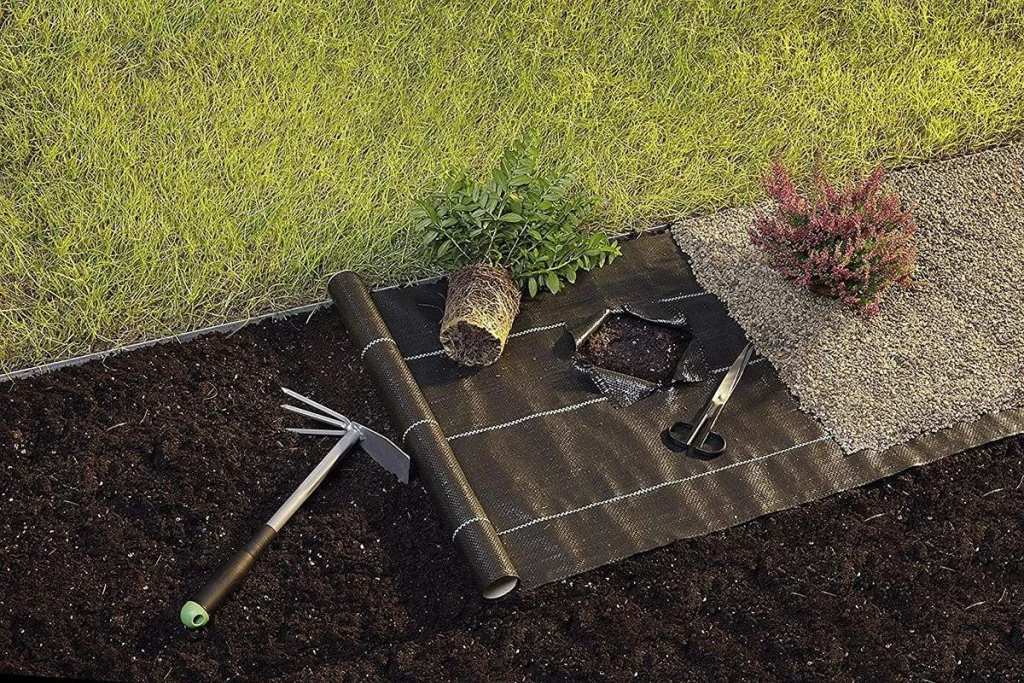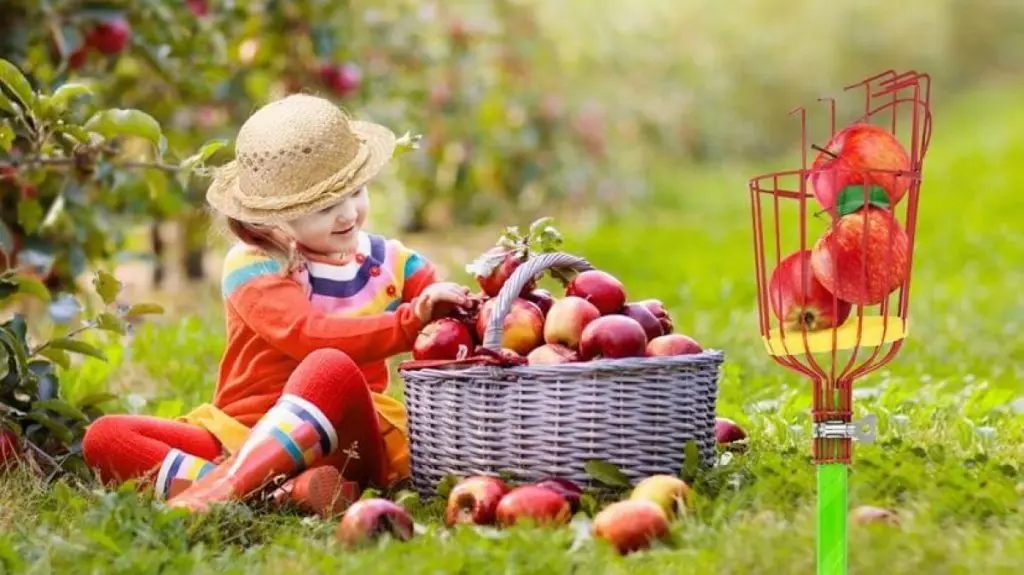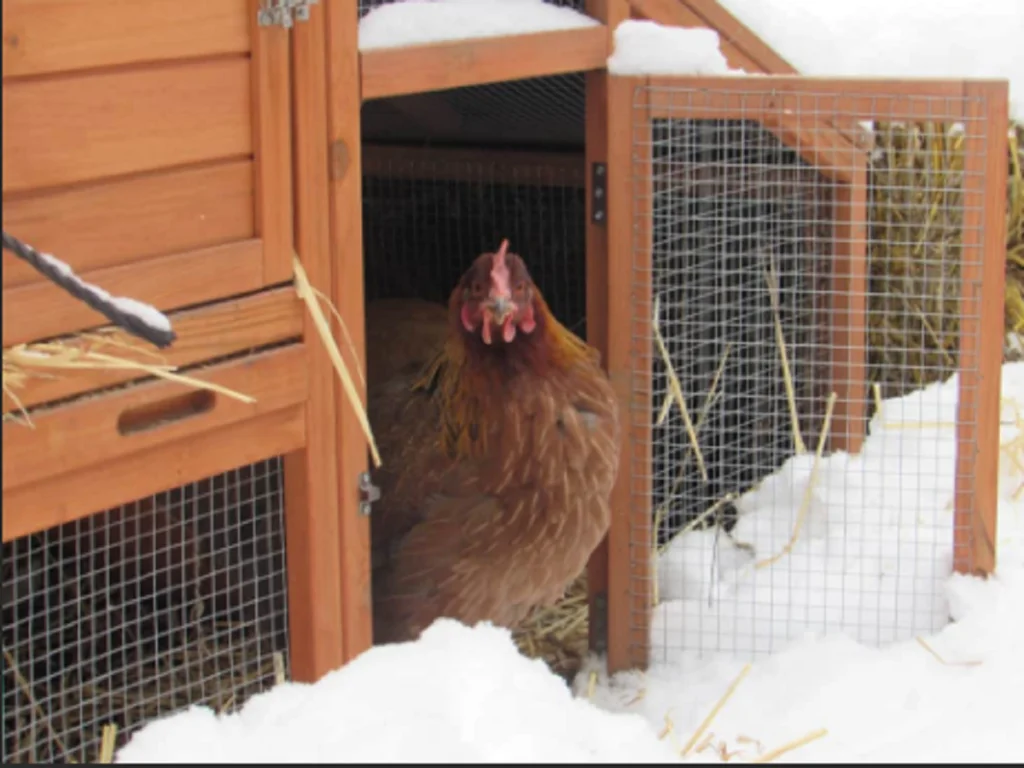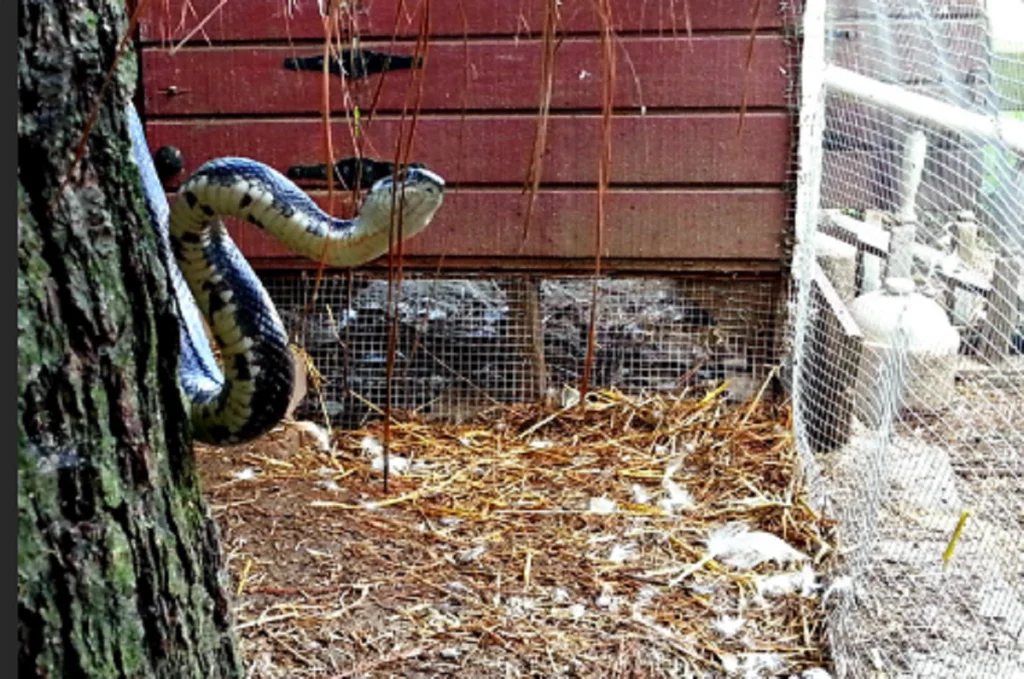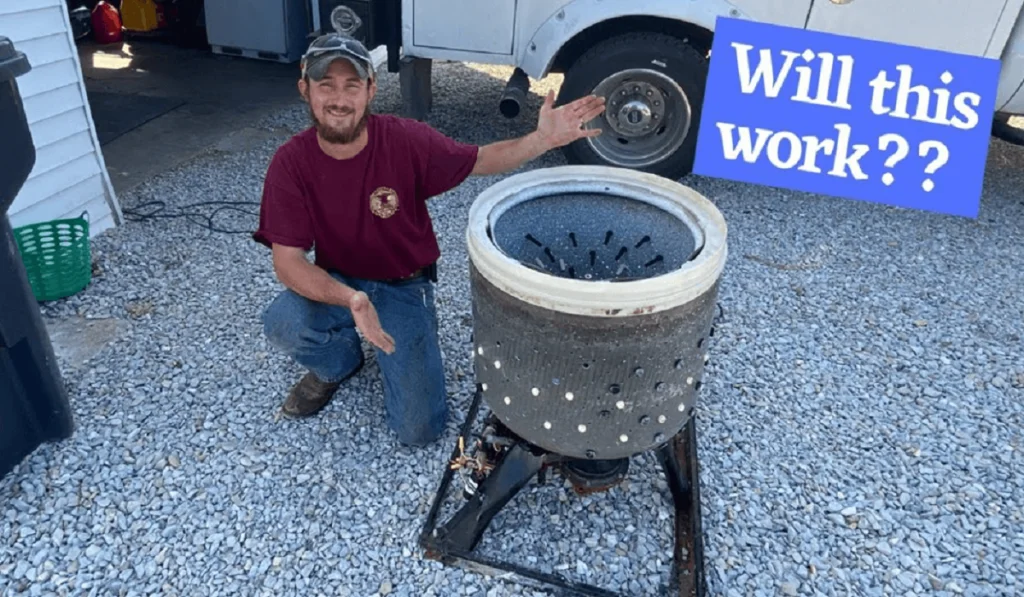Choosing the correct grass barrier is important to maintain order in your garden and ensure the good health of your plants. The guide explores different kinds of the grass barriers, emphasizing on such issues as materials of which these barriers are made, methods of their installation, and the influence of climate upon your option.
It is about protection from weedy grasses but with the ability to endure various weather conditions. We have compiled all the understandings for you to do the right choice.
Check out our suggestions to find a perfect under fence grass barrier that is designed to meet specific needs of a gardener. With our help, the creation of a colorful, healthy outdoor environment is a pretty simple task. Jump into the issue and look for an answer which coordinates with your gardening objectives so that your garden space remains both appealing and healthy.
Table of contents
Grass Barrier: The Key to a Well-Kept Garden
What is a Grass Barrier?
A grass barrier stops weeds and unwanted grass from invading your garden. It’s a shield that keeps your space neat, letting soil stay healthy. This fabric is tough against damage and erosion but allows air and water to nourish the earth. It’s great for anyone wanting a clean yard without extra work.
6 Different Types of Grass Barriers:
When it comes to choosing a grass barrier, you’ve got options:
- Plastic grass barriers: They’re lightweight and affordable, and you can cut them into any shape. Great for keeping your garden beds neat.
- Metal grass barriers: They’re sturdy, resist rust, and give your garden a polished edge. Perfect for a modern look.
- Fabric grass barriers: They block weeds and grass and let water and nutrients in. They nurture desired plants, keeping the garden vibrant and well-maintained.
- Composite grass barriers: These mix different materials for a tough barrier. They’re flexible, durable, and work well in any garden setting.
- Concrete or stone edging: For those who love a classic look. These barriers are heavy and won’t budge, making them great for a permanent solution.
- Bamboo edging: Bring a bit of nature into your garden. It gives your space a natural look while being an eco-friendly option.
Each type has its perks. Whether you’re looking for something long-lasting like fabric or natural like bamboo, there’s a perfect match for your garden’s needs.
Things to Consider When Choosing a Grass Barrier Under Fence
Discover the best landscape fabrics or grass barrier edging to ensure your garden’s edges stay neat. It also helps your plants thrive and protect them from unwanted grass and weeds. Here are some of the important considerations:
Materials:
Choosing the right material for grass barrier is crucial for garden health and aesthetics. Each type offers unique benefits, so consider what’s best for your space.
- Plastics: Cheap, bends easily, and quick to put in. However, sunlight breaks it down, and it’s not kind to the planet. Best for short-term fixes.
- Metals: Offers a sleek, clean edge that lasts. It’s costly but worth it for its durability and style. Watch out, though, as it can get too hot and hurt your plants.
- Fabrics: This choice is a friend to your garden’s health. It stands up to tearing and keeps the ground good. It’s a wise choice for those thinking of the earth and its plants.
- Composites: A mix of materials makes this both tough and pretty. There are many styles to choose from. The catch? You might pay more for these benefits.
- Concrete or stones: This is your go-to for a look that doesn’t change. It’s solid and has a classic vibe. The downsides are its high price, complicated installation process, and lack of flexibility.
- Bamboo edging: This brings a natural feel to your garden and is easy to install. It’s a green option that you’ll need to replace over time due to wear.
Remember, the best barrier not only suits your garden’s style but also its health needs. Think about what’s best for your space, and your plants will thank you.
Height and Depth:
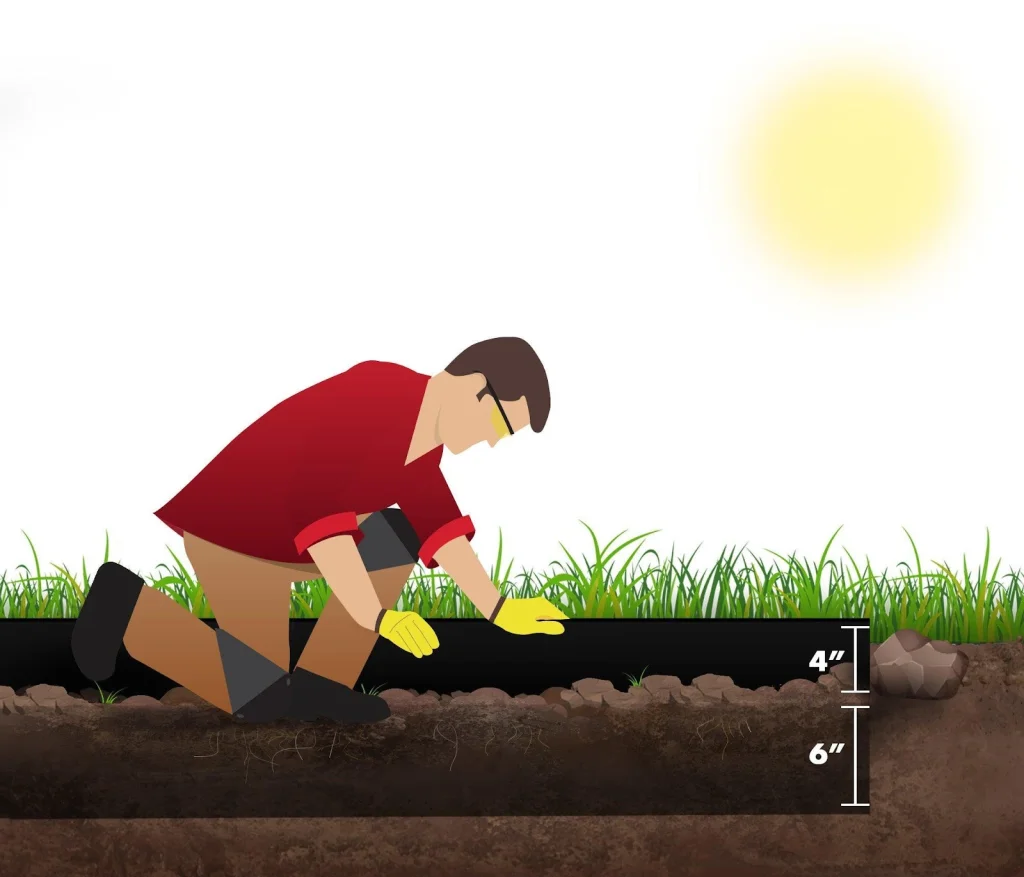
Getting the height and depth right is important for an effective under fence grass barrier. The ideal full height for a grass barrier edging is 10 inches. Here’s how it works:
- 6 inches should be underground. This depth ensures that roots can’t sneak under the barrier.
- 4 inches should stick out above the ground. This height keeps grass and weeds from crossing over.
This setup creates a strong defense for your garden beds. It stops grass and weeds in their tracks. Plus, it makes your garden look neat and well-kept. Remember, a little digging can lead to a lot of beauty and less maintenance in your garden.
Convenience of Installation
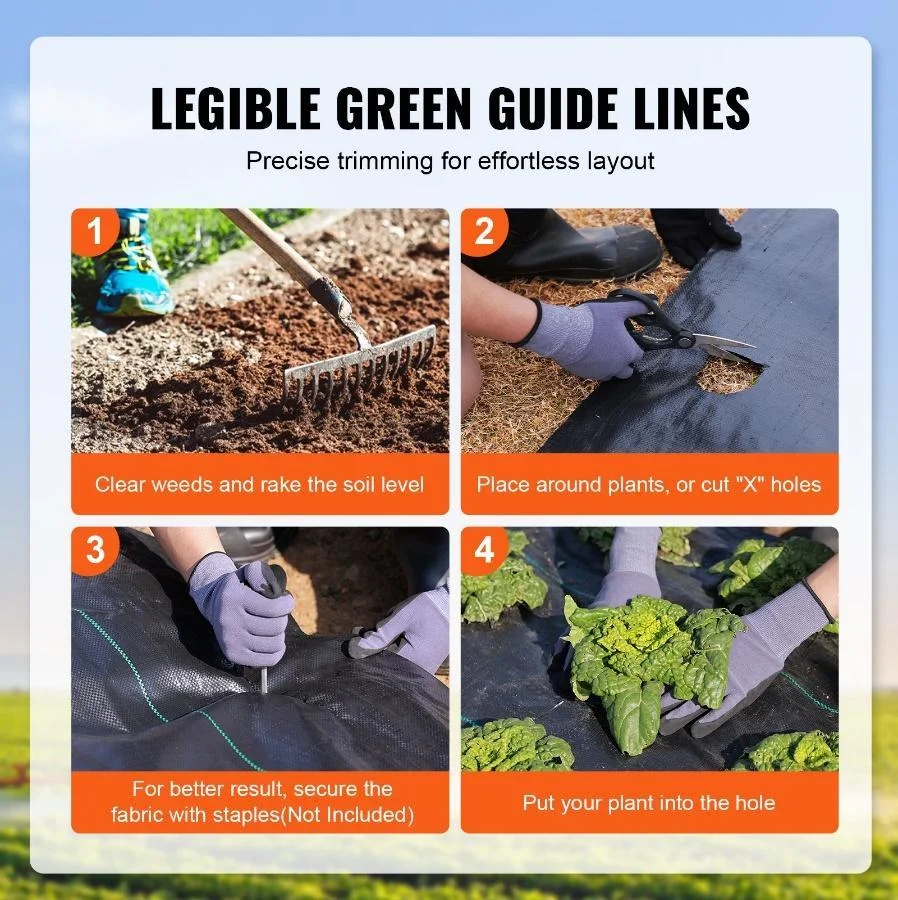
Putting in edging takes work. You have to dig, which eats up time and effort. It’s not a quick job. But there’s good news with fabric and plastic grass barriers. They’re easier to handle.
- First, clear away any grass or weeds. Then, smooth out the dirt.
- Next, lay down your barrier around plants.
- You might need to cut holes or use staples to keep it in place.
Fabric barriers are recommended because they show clear lines for precise trimming. This makes your gardening much simpler.
Permeability:
Your garden’s health hangs on how well air and water move through the soil. Some barriers, like plastic, can block this flow. That’s not good for your plants. Enter woven fabric barriers. These are game-changers. They let air and moisture through but keep the weeds out. This setup helps your garden to produce healthy fruits and veggies. It’s all about giving your plants what they need the most.
Interesting Fact: A breathable fabric barrier not only promotes healthier plant growth but can also lead to tastier fruits and vegetables!
Price:
When choosing a grass barrier, price matters a lot. Some options, like metal and composite edgings, can be pricey. For example, metal costs about $59 for an edging over 16 feet. Composite isn’t cheap either, at $30 for 40 feet. Bamboo, while eco-friendly, comes with a higher price tag of around $50 for just 6 feet.
However, plastic and fabric barriers offer a wallet-friendly choice. Among these, fabric barriers stand out. They’re not just affordable, at $38.99 for a huge sheet, but also easy to install. Given their pros and cons, fabric barriers offer the best value.
Fun Fact: Choosing a fabric grass barrier is like finding a designer dress at a thrift store price!
Climate Considerations:
Different barriers react differently to the weather. Metal can get hot, possibly harming plant roots. Bamboo might not last in rainy climates. Plastic could tear apart in storms. But fabric grass barriers handle it all like a champ. They’re strong against rain, storms, and heat. They’re ideal for any weather, thanks to their durability and sun-blocking powers.
Considering all the factors, the geotextile and landscape fabric emerge as the top picks for gardeners everywhere. It balances affordability, ease of use, and effectiveness across various weather conditions. This makes it a top choice for gardeners looking to protect their gardens from unwanted grass and weeds while promoting plant health.
The Plants Protector: VEVOR Grass Barrier Landscape Fabric
Meet VEVOR, which stands out in the world of equipment and tools. With a dedicated team and a passion for excellence, we aim to offer top-notch tools at unbeatable prices. Serving over 10 million happy customers across more than 200 countries, the company is all about tough tools for less money.
Their commitment?
Fast delivery, easy returns, and customer service that’s always there for you. VEVOR makes hard work feel easier and more enjoyable.
VEVOR Grass Barrier Landscape Fabric:
This grass barrier landscape fabric by VEVOR is a must-have for gardeners looking to protect their plants. Its polypropylene fabric offers excellent strength while weighing just 11.02 pounds. Its design is focused on longevity and effectiveness in garden use.
Specs at a Glance:
- Main Material: Polypropylene fabric
- Tensile Strength: 570 N (lengthwise), 700 N (widthwise)
- Material Weight: 2.96 Oz per square yard (100g/m2)
- Product Weight: 11.02 lbs (5 kg)
Advantages of VEVOR Grass Barrier Landscape Fabric:
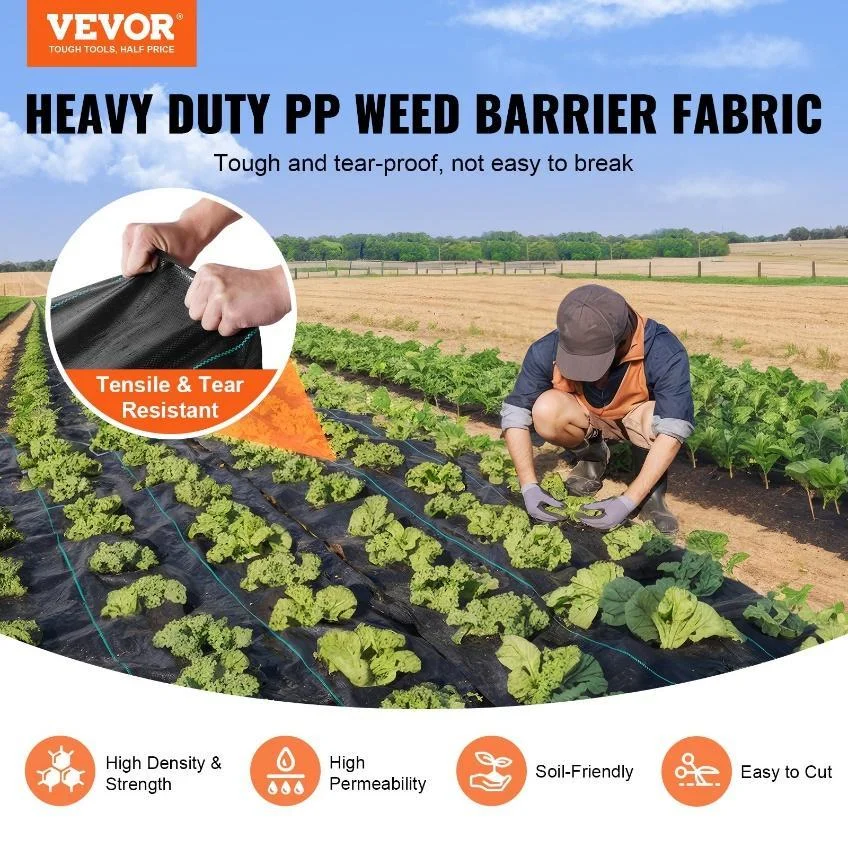
Choosing VEVOR’s landscape fabric comes with a host of benefits
- Durability: Built to withstand harsh conditions due to its high tensile strength.
- Density: Its tight weave means ultimate protection against weeds.
- Tear Resistance: This fabric won’t easily rip or tear, ensuring lasting use. Its precision cut with ultrasonic technology offers smooth and burr-free edges.
- High Permeability: Allows water and air to reach the soil, promoting plant health.
- Corrosion Proof: It won’t degrade over time, maintaining its integrity.
- Sunshine Blocking: Protects plants from excessive sunlight, aiding in growth.
VEVOR’s grass barrier landscape fabric stands out for its ability to offer supreme protection while supporting your garden’s overall health and prosperity.
Conclusion
The selection of the right grass barrier is essential for the beauty of our gardens and for the healthy growth of our plants. The selection of the material and the factor of the local climate are crucial in determining the most efficient barrier. Considering a wide variety of options, it is important to find a solution, which will not only prevent weeds but will also fit the needs of your garden. VEVOR grass barrier fabric is a durable, highly efficient and environment-friendly option that will deliver ultimate protection to your garden. This fabric acts as a barrier to the weeds and yet allowing water and necessary nutrients to penetrate, enabling your plants to grow healthy and strong.
Get the VEVOR grass barrier fabric for a durable, effective, and garden-friendly option. Ready to landscape your garden in the way it deserves the whitewash? Go to VEVOR grass barrier fabric today and feel the real difference.

